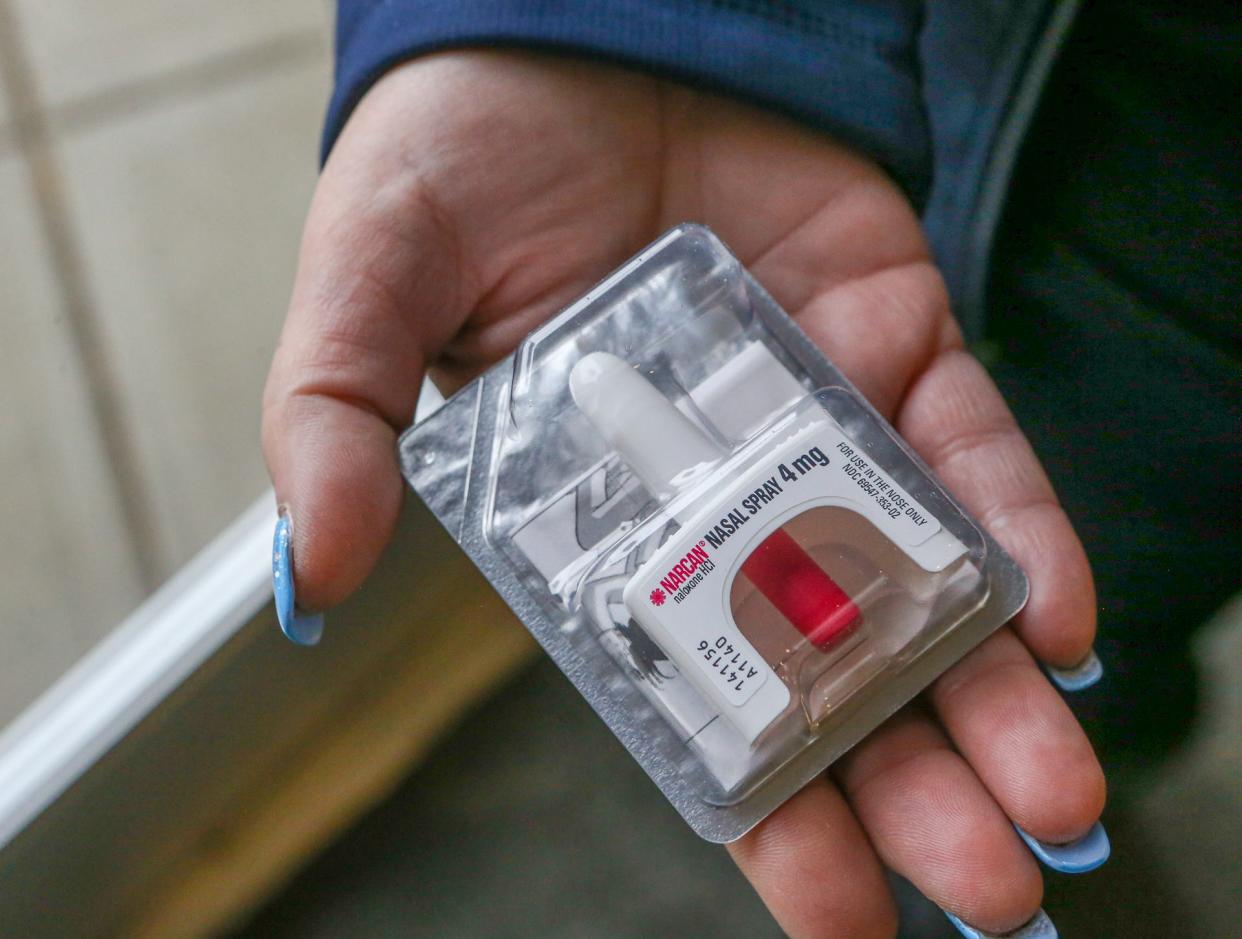How are RI's cities and towns spending their opioid money? Here's what we found.
PROVIDENCE – A total of 20% of the settlement agreements reached with manufacturers, distributors and sellers of opioid painkillers is headed to municipalities, and cities and towns are spending that money in ways as varied as the communities themselves.
Some is being used to purchase Narcan, a medication that can quickly reverse an opioid overdose. A few police departments have invested in handheld narcotics analyzers.
The City of Providence dedicated a large portion of its share to bolstering street outreach to at-risk communities. Still other cities and towns are accepting applications for possible programming, or have yet to spend their share at all.
Many communities are simply giving the funds to their police departments.
“That’s why I tell communities to talk to your prevention coalitions,” said Thomas Joyce, director of East Bay Recovery Center and co-chair of the Governor’s Overdose Prevention and Intervention Task Force. “I think there are a lot of creative things you can do. It was a big pot of money. You have to make sure its scope fits into what it’s supposed to do.”

How can cities and towns use opioid settlement money?
The memorandum of understanding reached between the state and municipalities specifies that the money be used to abate the harms caused by the opioid crisis through programs to address the abuse of narcotics; treat substance-use disorders; or mitigate other alleged effects.
The funds may be used for past expenditures as long as those costs are associated with easing the impacts of the crisis. Participating cities and towns may also pool their funds or direct it toward statewide abatement, though there are no explicit reporting requirements.
How have RI's cities and towns used their opioid settlement money?
So far, some $10.6 million has been directed to cities and towns.
The Journal reached out to a range of communities, including some of the state’s largest recipients, to get some examples of how the dollars are being spent.
More: 'The nation is watching us': RI got millions in opioid settlement. Here's how it's spent.
Providence: $2.3 million
$300,000 to Project Weber/RENEW to expand the days and hours peer-recovery specialists conduct mobile and street outreach to people facing substance-use or behavioral health disorders
$100,000 to VICTA LLC for its Neighbors in Recovery mini-grant program to provide emergency grants to assist residents with recovery housing aid, substance-use disorder treatments costs and transportation, food, telephone access and basic needs
$394,000 to East Bay Community Action Program for mobile outreach, overdose education and naloxone distribution, and safe stations.
The city will also cover 30% of the salary for a health and human services data and evaluation manager who will work with Human Services Division director Rachel Ferrara to ensure that the city continues to make data-driven decisions in all of its initiatives, a spokesman said.
Warwick: $1.1 million
$74,504 for a TruNarc handheld narcotic analyzer to safely test drugs.
$32,000 for 2023 Chevrolet Trailblazer for the Mental Health Crisis Response Team.
$90,000 for the Police Department’s mental-health clinician.
$85,000 for the executive director of the Police Athletic League to engage youth and conduct outreach.
$23,560 for officers and the clinician to conduct wellness checks outside of working hours.
Cranston: $899,675
$75,818 for the HOPE Initiative, a nonprofit that teams recovery coaches and clinicians with law enforcement in response to overdoses
$41,671 to purchase two TruNarc handheld narcotics analyzers
$818,869 remains in the restricted account, earning $34,684 in interest.
Pawtucket: $1.7 million
$1.7 million to be released over 14 years for establishing a grant program in which community providers can apply for grants to support initiatives that respond to the negative impacts of the opioid epidemic in Pawtucket. The grants range from $5,000 to $150,000.
East Providence: $500,000
The city is in the process of hiring a community health coordinator/veterans services coordinator.
Woonsocket: $439,000
$250,000 to Blackstone Valley Prevention Coalition.
$36,000 to the Police Department for a narcotics analyzer.
$111,000 remains unspent, but City Council Vice President Valerie Gonzalez would like to get an evidence-based life-skills curriculum into the schools.
Newport: $269,468
$99,200 on Narcan, two TruNarc Handheld Narcotics Analyzers, 160 overdose prevention kits, and other equipment.
South Kingstown: $246,000
The town is considering spending its share on programs, including the HOPE Initiative, and expects to begin dispersing funds in the next quarter, according to Police Chief Matthew C. Moynihan.
Central Falls: $96,663
An inter-departmental team is evaluating spending options.
This article originally appeared on The Providence Journal: How RI municipalities are spending their opioid settlement funds
